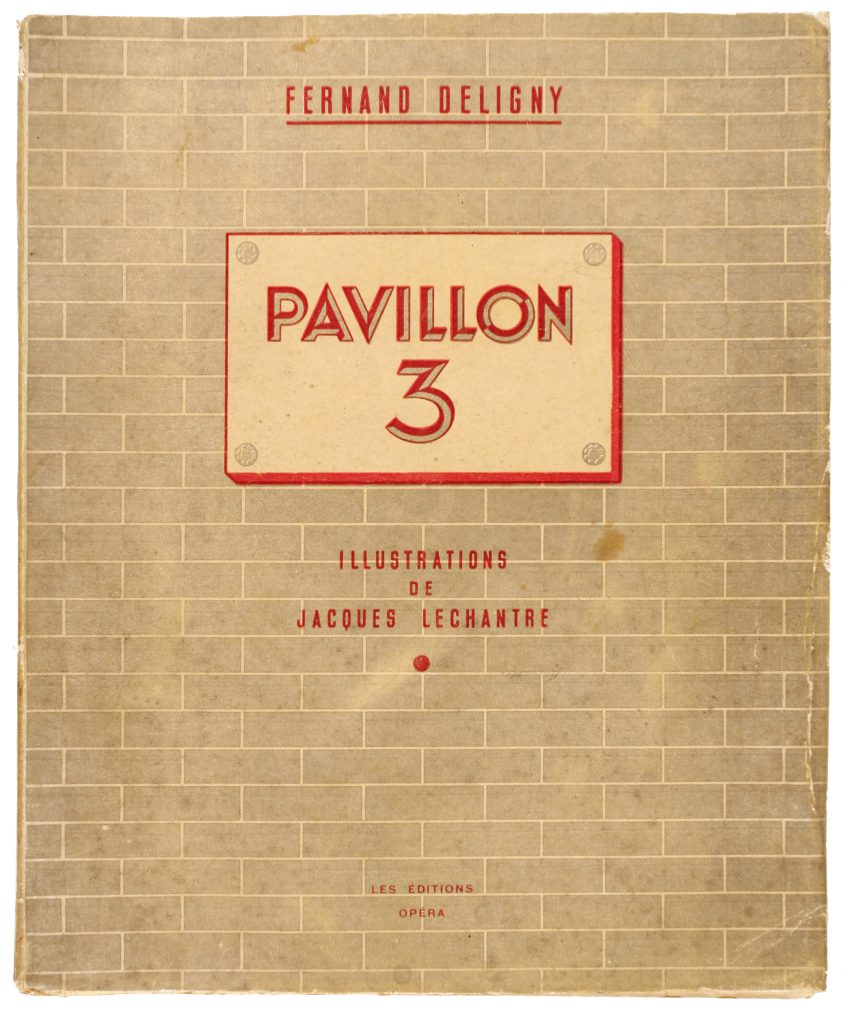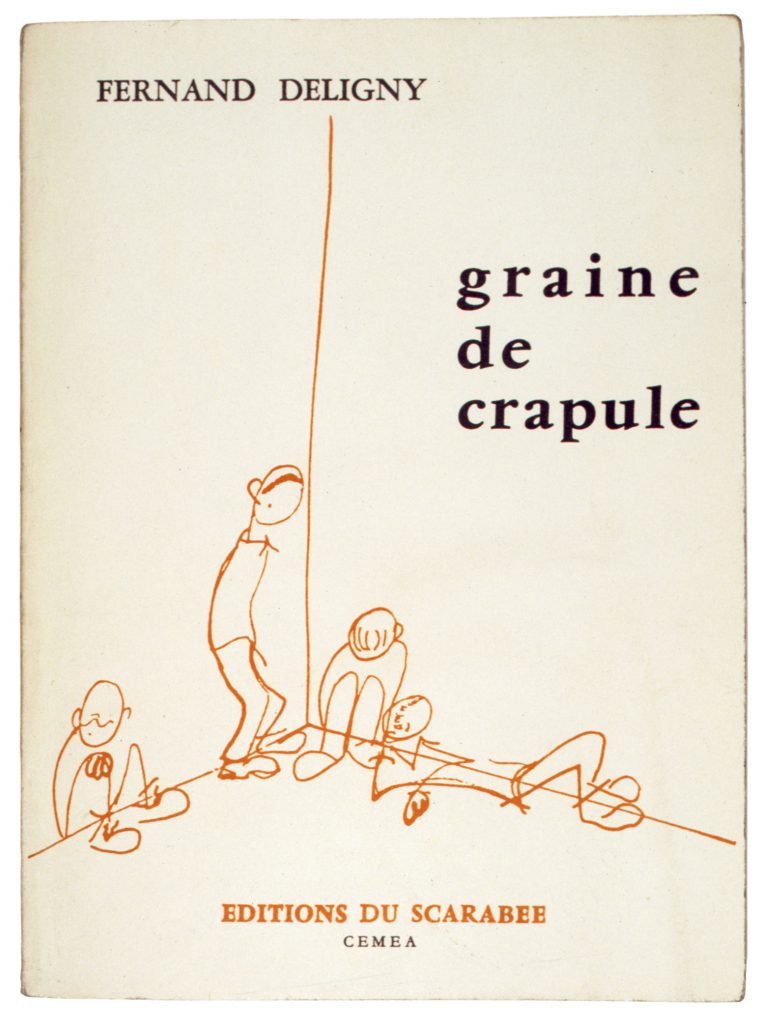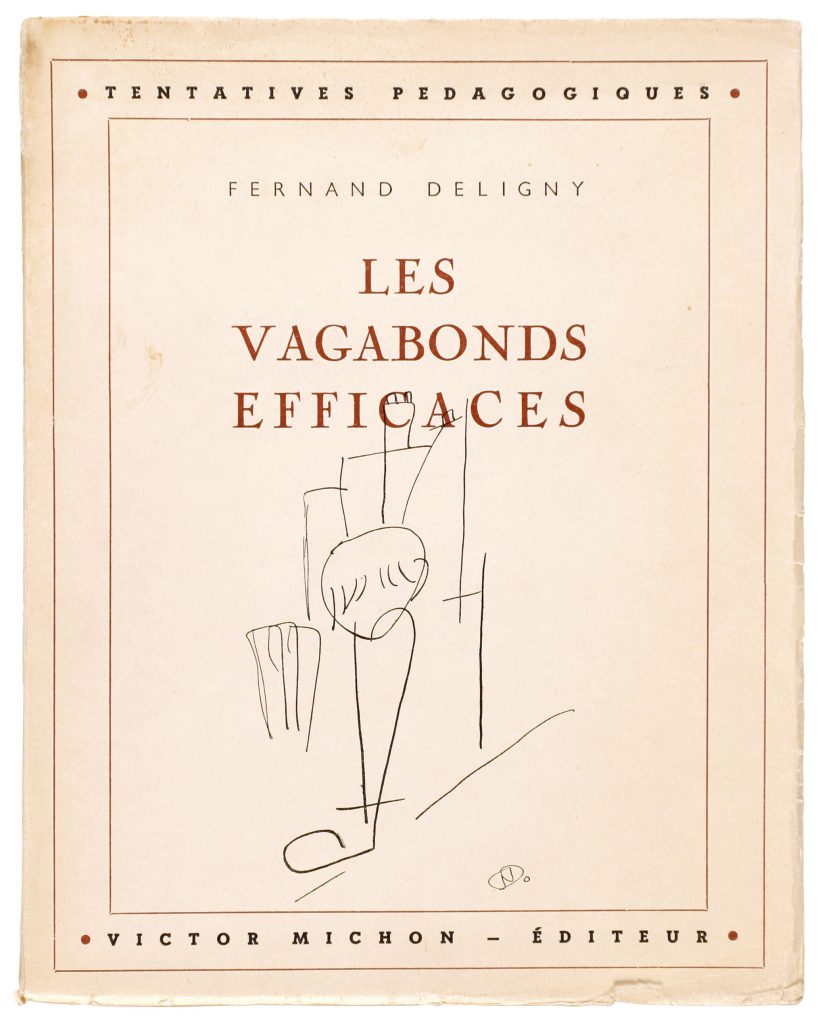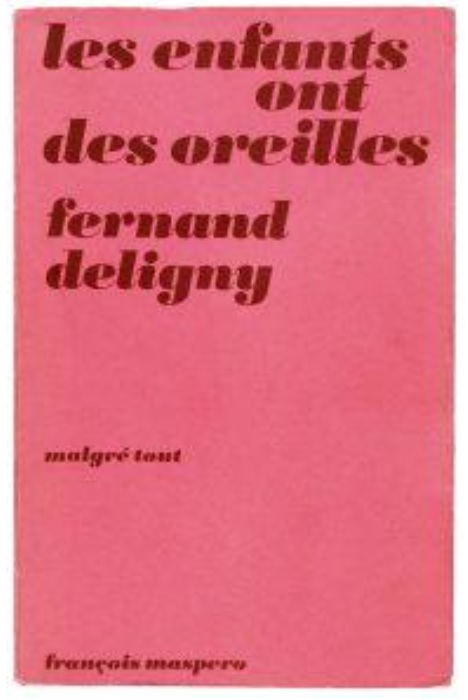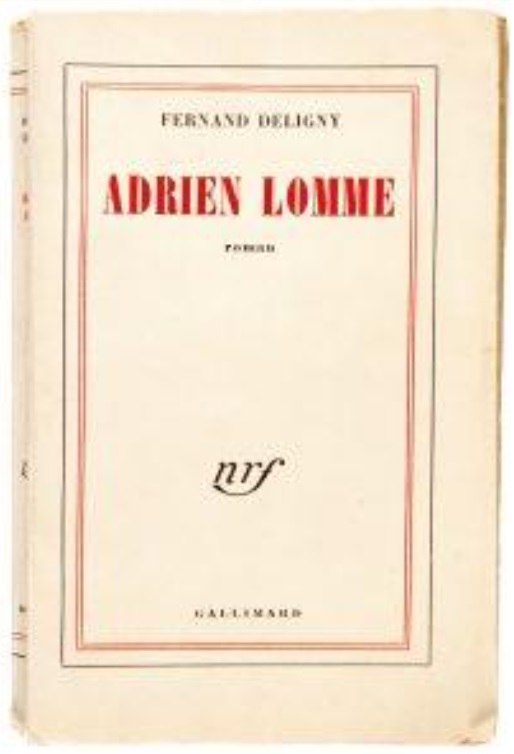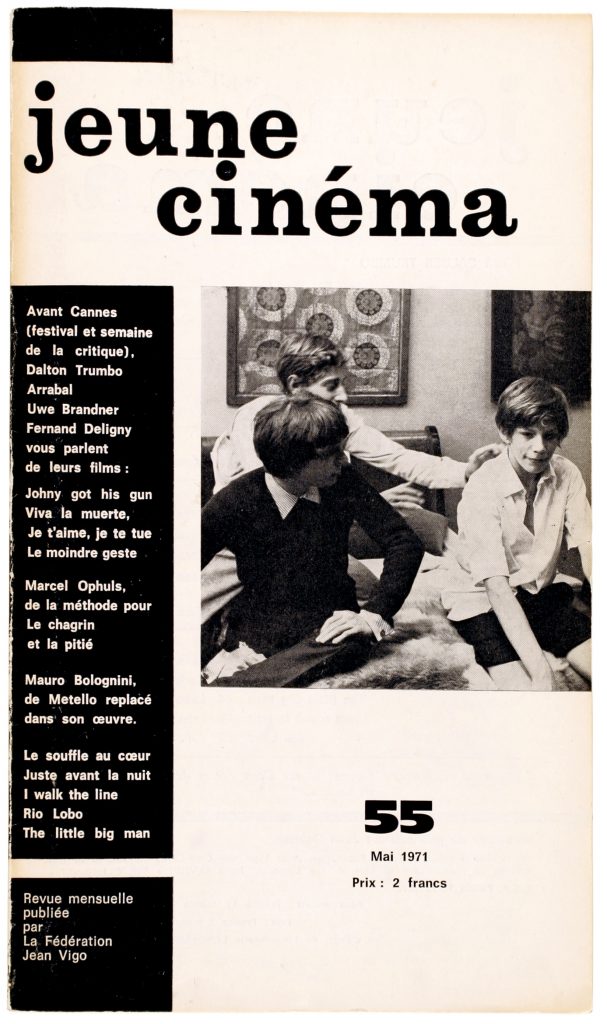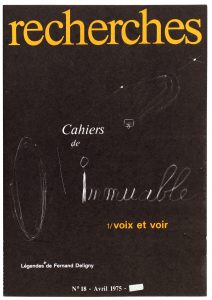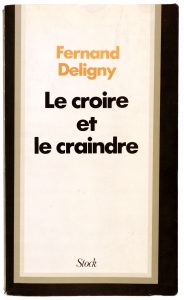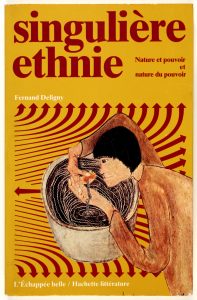

1913
1919-1931
In 1919, Deligny, a war orphan, is recognized as a “Ward of the Nation.” He studies under the guidance of his maternal grandfather and is considered an excellent pupil. In the 1920s, he moves to Lille, practices non-denominational scouting, and finishes his secondary education in 1931.
1931-1936
Deligny refuses military service, despite family pressure. He begins preparatory work for the entrance exam to the grandes écoles, but abandons his studies to instead take classes in philosophy and psychology at the University of Lille –while spending most of his time in the city’s cinemas and cafes. Between 1933 and 1935 he serves as the editor-in-chief of the magazine Lille Université, where he publishes chronicles, film criticism, and other texts. During the period Deligny begins to frequent the Armentières asylum (close to Lille). Amid fascist demonstrations, he joins the Communist Youth and participates in organizing communist students at the university. Shortly thereafter, he begins service as an infantryman in the École militaire in Paris.
1937-1939
Deligny lives in Paris with Josette Saleil, whom he met in Lille. In 1938, the father of François Châtelet (Deligny’s childhood friend) offers him a post as a substitute teacher in the primary school on Rue de la Brèche-aux-Loups, where Deligny will remain for four months. He finishes the school year working at a different school in Nogent-sur-Marne. His educational “methods” reject the use of notebooks and instead include walks with students in the Bois de Vincennes and games of mimicry. In 1939 Deligny accepts another post, this time at the Armentières asylum (renamed the Psychiatric Hospital two years earlier), one of the most important institutions of mental health in France. He marries Josette Salieil and moves to Armentières.
1939-1940
Deligny is called up to serve in the infantry regiment of Lille, which sets out for the Netherlands. The following year, after armistice (with French defeat and German occupation), he is released and returns to Armentières (now under German control) and resumes his activities at the Medical Pedagogy Institute/IMP (for children with “intellectual impairments”).
1941-1942
The asylum is bombarded. Deligny becomes an educator in Pavillon 3, where he is responsible for children considered “impaired and impossible to educate.” There, he declares the end of punishment and organizes workshops, games and walks with guardians (unemployed workers, artisans, former convicts). In 1942 he earns his credentials to teach children with learning “impairments.”
1943
Deligny leaves Armentières and returns to Lille. The Vichy government makes him director of juvenile delinquency prevention in the North region. The Regional Association of Childhood and Adolescent Protection (ARSEA) is created and Deligny assumes the role of technical advisor.
1945
Deligny is named director of the first Center of Observation and Triage (COT) in the North region, in Lille. He designs the center (with 80 adolescents) as an open space and hires assistants from among trade-union, working class, and unemployed milieus. Many adolescents fleeing from correctional homes seek refuge at the COT.
Publication of Graine de crapule – Conseils aux éducateurs qui voudraient la cultiver.
1946
Publication of Puissants personnages, dedicated to Catherine, the daughter of Deligny and Josette born the year prior. In May the directorship of Arsea relieves Deligny of his duties. He goes on to run a training course for educators in Montesson (Yvelines), but shortly afterward asks to be separated from the charge. He meets Hugette Dumoulin, a communist militant responsible for the Center of Youth Hostels in Paris. Deligny is named Regional Director of Labor and Culture. He organizes a series of film projections and meets cinema critic André Bazin and the documentarian Chris Marker.
1947
Hugette Dumoulin organizes the Union des Jeunes Filles de France du Nord. In the spring, Dumoulin and Deligny stage a show in Paris at the Arènes de Lutèce, using textile apprentices as actors. Deligny designs an attention network for juvenile offenders, with the help of militants of popular education and youth hostels. There is held the first meeting preparing for the Grande Cordée, in the Laboratory of Childhood Psychobiology, directed by Henri Wallon.
Publication of Vagabonds efficaces.
1948
The statutes of the Grande Cordée, presided over by Henri Wallon, are published. The administrative council is composed of communist militants. The first adolescents are entrusted to the institution. Deligny joins the PCF (French Communist Party), sending his enrollment card to Maurice Thorez (secretary general of the PCF between 1940 and 1964) with a copy of Vagabonds efficaces. Deligny is invited to be a party candidate in municipal elections, but he declines.
1955-1957
Deligny begins to correspond with Irène Lézine, a psychologist, PCF militant, and the author of a biography on Anton Sémionovitch Makarenko. Deligny plans a film about the experience at Grande Cordée (although only a few sequences are filmed). Since 1948 the network has received 134 adolescents and would remain in operation –precariously– until the early 1960s.
1958-1962
Publication of Adrien Lomme. François Truffaut seeks Deligny to design the final scenes from the script of Les Quatre Cents Coups (The 400 Blows), his first full-length and recipient of the prize for best director in the 1959 Cannes Film Festival. The beginning of a correspondence –and several attempted film collaborations– between Deligny and Truffaut that would last in the 1970s. In 1968, Truffaut’s scriptwriter Suzanne Schiffman travels to the Ceevennes to film Janmari, the model for 1970’s L’Enfant Sauvage. In 1962 the Grande Cordée comes to an end.
1967
On July 14, Deligny leaves La Borde and takes up residence at Gourgas, within a property owned by Félix Guattari that had been transformed into a meeting place for far-left intellectuals and militants. Deligny writes pamphlets against the Vietnam War.
1969
Deligny begins a new endeavor with autistic children. Maud Mannoni, Françoise Dolto and Émile Monnerot (head of psychiatry at the Marseille psychiatric hospital) refer to him the first children. Jacques Lin takes up residency in Graniers, where Janmari remains. Other children live in Monoblet. This is the original network. The first letters and lines of error. Publication of Cahiers de l’Aire, in which Deligny would participate until 1972.
1970-1974
Publication of Vagabonds Efficaces et autres récits. Creation of the association Les Neumes, designed to maintain activities in Cévennes. Nearly fifteen children spend Christmas in the network. Filming for the Chris Marker-backed Le Moindre Geste comes to an end. The film is selected and screened at the Week of Criticism at the 1971 Cannes Festival (it would only enter the screening circuit in France in 2004). Jacques Lin takes up residence with autistic children at a new settlement in Serret –the site becomes the “laboratory” for the network.
1973
In 1973, Jean and Dominique Lin, aged eighteen and nineteen, abandon their studies and join their brother Jacques. During the period, three children live on a permanent basis in the network: Cristophe B., Gilles T. and Janmari. The demands of the appointment begin to grow. Filming starts on Ce Gamin là, directed by Renaud Victor and produced by François Truffaut and others. Pierre-François Moreau visits Deligny, and in 1978 he publishes Fernand Deligny et les idéologies de l’enfance, with a postscript by Deligny. The British rock group Pink Floyd donates money for the purchase of a house in Graniers, where Deligny would reside.
1975-1977
Publication of Nous et l’innocent, written by Isaac Joseph, and three issues of Cahiers de l’immuable, by the magazine Recherches. Ce Gamin là is presented at the Grenoble Film Festival. The film, screened at cinemas in Paris as well as in special educational environments, is followed by articles, reviews and journalistic coverage. In mid-1976, Deligny begins his correspondence with Louis Althusser, whom he would visit in 1977. Deligny requests from the INA (National Audiovisual Institute) the material necessary to mount a video unit.
1978-1983
Nouvelle Critique publishes a dossier about Deligny, written by Marie Bonnafé. Balivernes por um pote is published, with a dedication to Guattari. Le croire et le craindre, by Isaac Joseph is published. Deligny writes the text Quand le bonhomme n’y est pas, a commentary on Book II of Jacques Lacan’s Seminar.
1980
Publicação de Singulière ethnie; maio: exposição Cartes et figures de la terre no Centro Pompidou; setembro, publicação de La septième face Du dé e de um dossiê em La Quinzaine littéraire sobre Deligny; novembro: publicação de Enfants et le silence. Montagem das sequências gravadas na rede por Pierre Deiber, para o Centro regional para a infância e adolescência inadptadas de Lyon, sob o título Le faire et l’Agir – acompanhdo pela voz off de Deligny, o documentário será usado na formação de educadores.
1983
Drafting of various texts, among them A come Asile and L’Éloge de l’asile (published in 1999); 1983/ September: publication of Camérer (two other texts with the same title would appear in 2001 and 2004).
1984-1989
Deligny is hospitalized with a double stomach ulcer. The network is decommissioned, but Deligny, Jacques Lin, and Gisèle Durand remain in Graniers with Cristophe B., Janmari and Gilles T. 1985: Deligny and Renaud Victor write a script for a full-length film entitled Toits d’asile, the filming of which would be interrupted and finally resumed, resulting in the film Fernand Deligny. À propos d’un film à faire, produced together with television broadcasters. 1988: Deligny begins to write an autobiographic account entitled L’Enfant de citadelle, although he would abandon it in 1993.
1990-1996
French television premiere of Fernand Deligny. À propos d’un film à faire. The Cahiers du cinema publishes a dossier about the film. 1994: Deligny is hospitalized with a hip fracture. He returns to Graniers but is practically immobile. He passes away in Graniers on September 18, 1996.
This chronology is a summary of the “Chronologie” present in Fernand Deligny Oeuvres, Édition établie et présentée par Sandra Alvarez Toledo.
Editions de L’Arachnéen, Paris, 2007, pp. 1820-1831.

